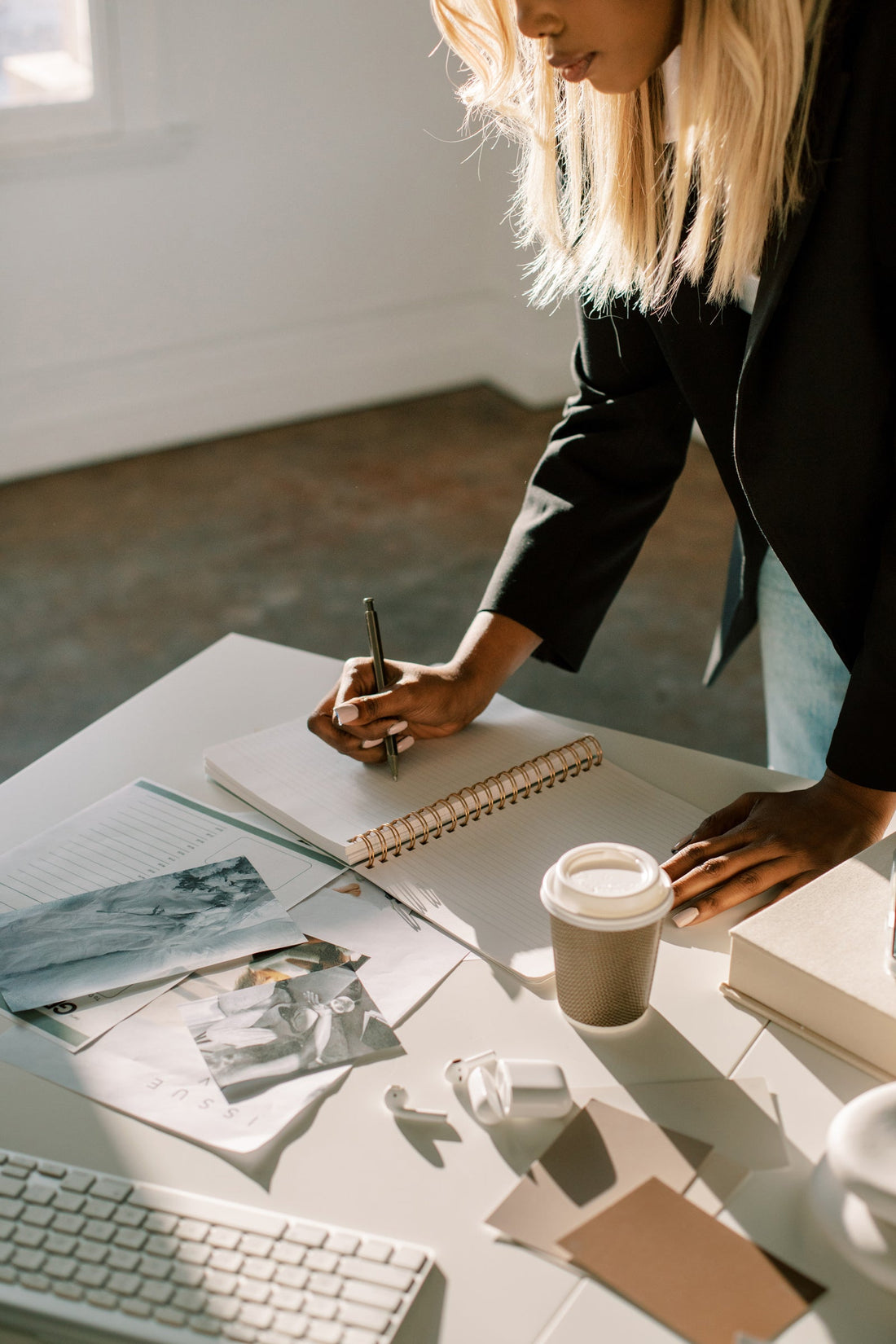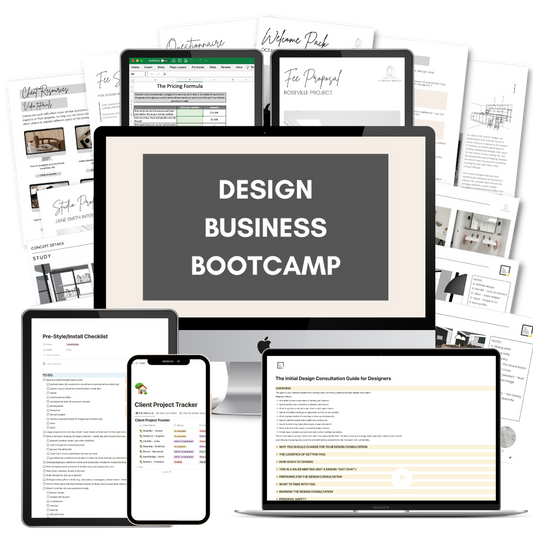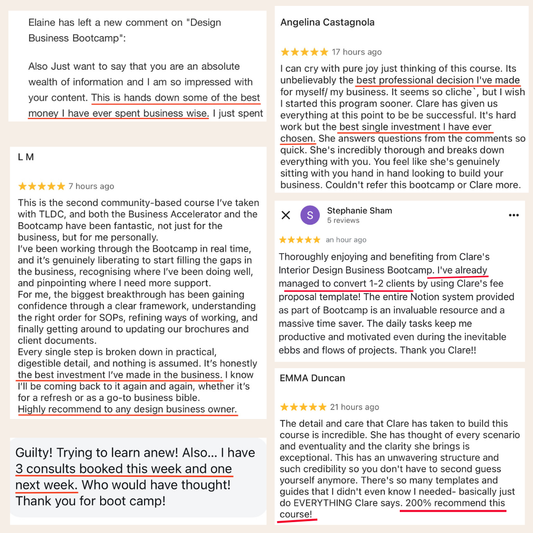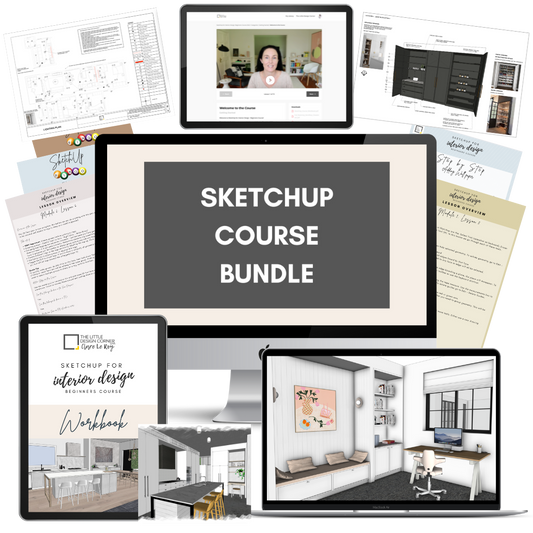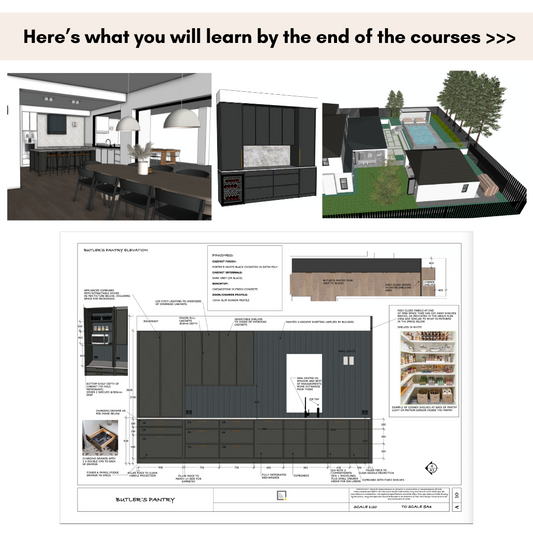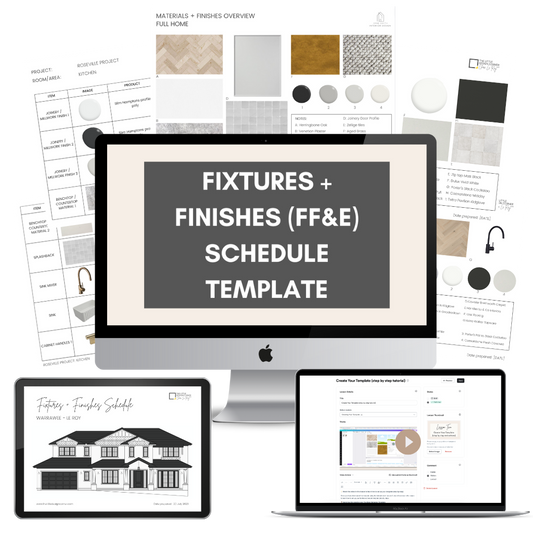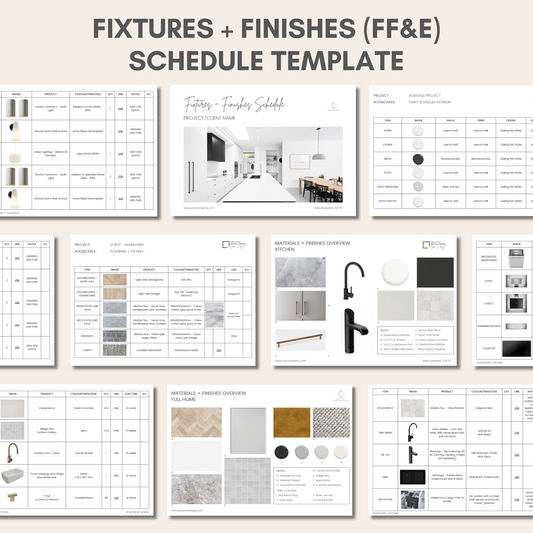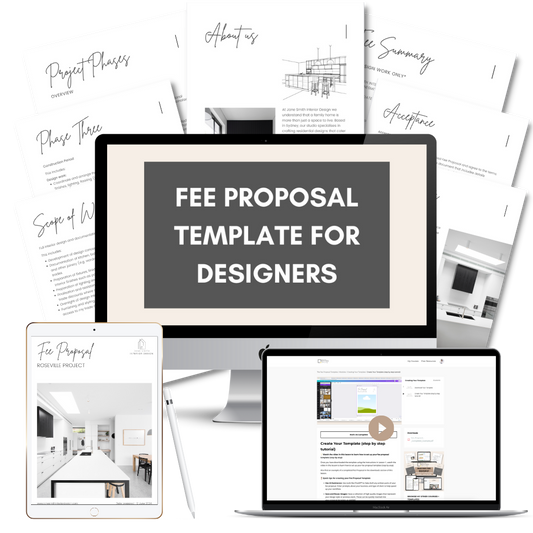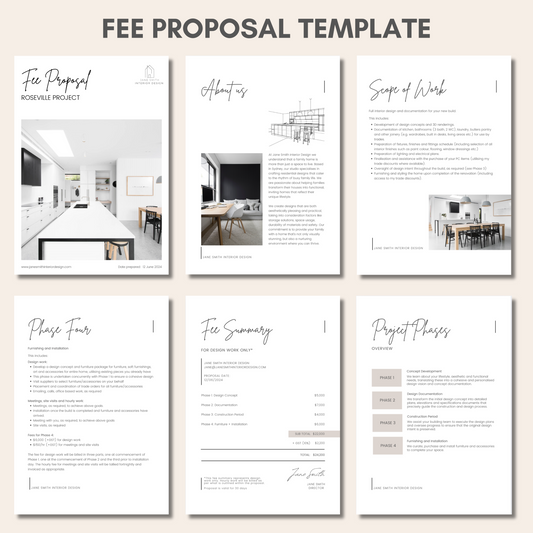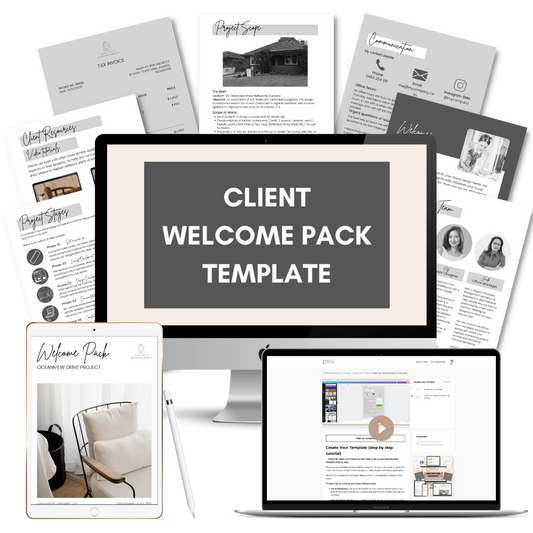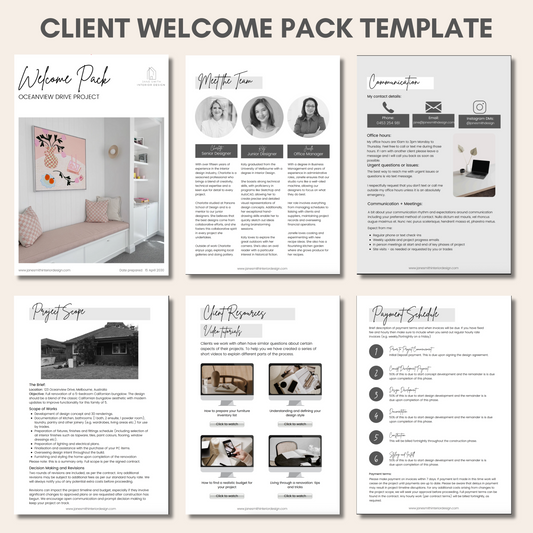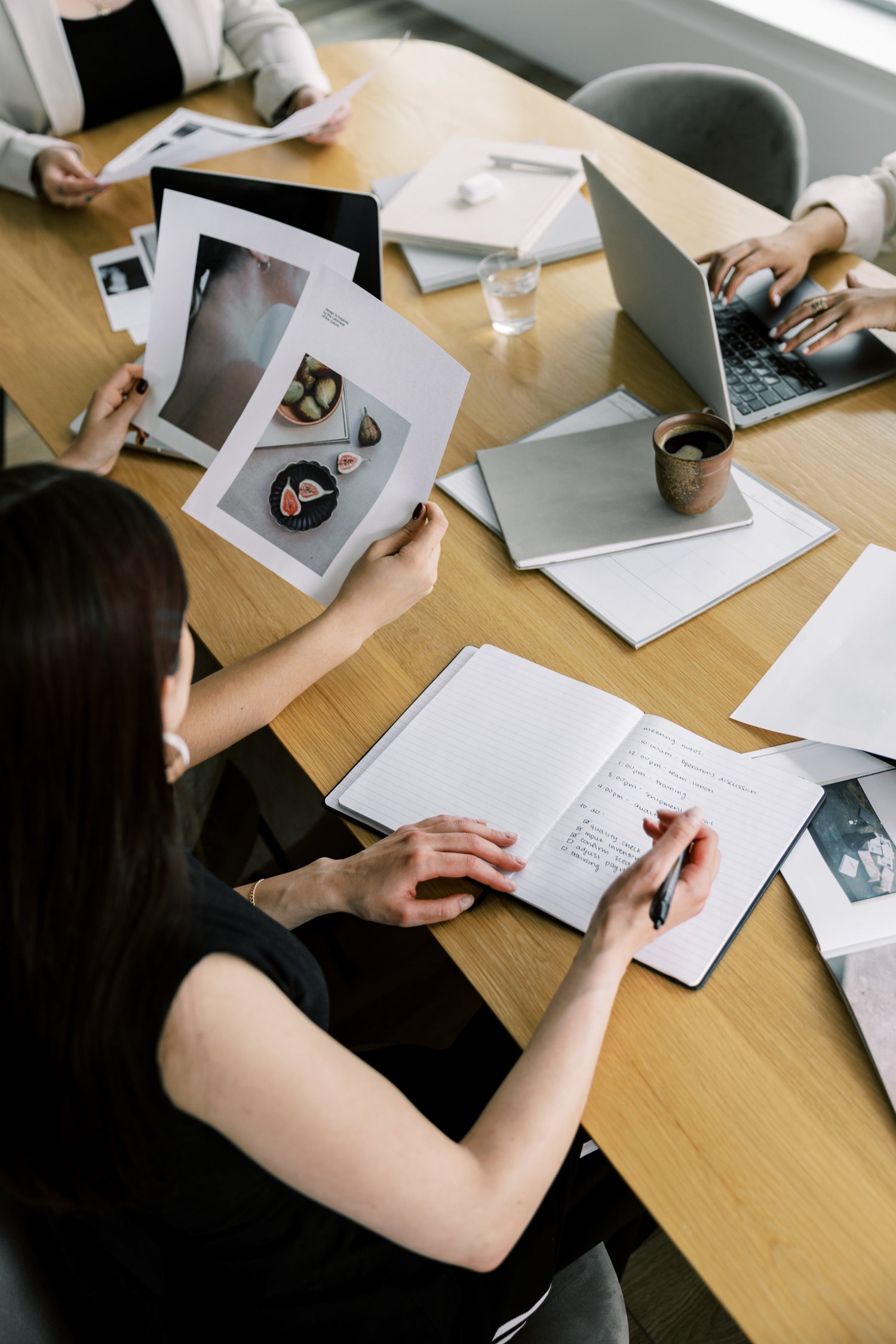Today I want to give you some tips on how to improve your initial design consultations with clients as this is an area that I haven't made a lot of content about yet.
There's quite a bit that goes in to a great initial design consultation. You have to find a balance between providing value during the consultation while also selling the next step of your process (i.e. a larger, more lucrative project). The consultation is a chance to build rapport and trust. It's not only a chance for your client to see if they like working with you, it's also a chance to see if you like working with the client.
But if you get the initial design consultation right you'll find most clients will want to do more work with you. I used to convert about 90% of my design consultations to further paid work (that’s a made up statistic, I actually didn’t track it, but it was a lot of them!)
So here's a few tips for how you can improve your first meeting with design clients.
The purpose of the design consultation
It’s important that you have clear goals and expectations for what you want to achieve during the design consultation. If you go in without a purpose then the consultation lacks direction and you are unlikely to move the client to further work with you.
For me an initial design consultation has a few main purposes. They are:
-
to let the client get to know me and see if I’m a good fit to help them with their project
-
to let me get to know the client and see if I actually wanted to work with them (not all clients are a good fit and if they are difficult or hard to get on with during an initial consultation they will be like this for an entire project so run away if that’s the case!)
-
to be as generous as I can with my knowledge and expertise and to show them I’m an expert at what I do and I know what I’m talking about. I give examples of how to do this in the sections below
-
to review the project/house and see what the client needs (gather the scope of works)
-
to find out some initial information about the clients’ function requirements and aesthetic and to see if this is a good fit. For example - if a client had a completely different style to me then I normally wouldn’t take the project further. I once took on a project with a client who had a completely different style than I did and it was a disaster. They were never happy with what I created and I also didn’t enjoy the process. Be honest with whether you can help them otherwise try and point them in the direction of another designer who may be a better fit. A good way to get a sense of a clients’ design aesthetic is to get them to create a Pinterest board.
-
to find out some initial information about the clients’ budget. Again this is really important. Is the client being realistic about what they can achieve with the budget they have? If they want to renovate their entire house and only have $40,000 then this is most likely not going to be a successful project as that’s a widely unrealistic budget (at least in Sydney!). So during the consultation my job was either to counsel them and help them understand what their scope of works really might cost (and see if they are comfortable with that) or be honest and let them know that it may not be a good fit for you if their budget is completely unrealistic. You never want to take on a project where you are setting yourself up for failure (i.e. be telling a client you can help them renovate an entire house for $40,000!).
-
to get a client excited about what’s possible and the transformation you can help them achieve (more on that below).
Even if these are not your goals during an initial design consultation make sure you know what the purpose is for your consultations. This is critical in making sure the consultation is a professional meeting with a clear direction and not just a design chit chat.
The overarching aim of your consultation should be one thing though: to move the client to more work with you. Although the client thinks you’re having a design meeting, what you actually are doing is having a sales meeting. So make sure you go in to it knowing that’s the purpose but run the consultation in a way that the client gets what they want and need out of it at the same time. This is a balancing act that takes time to get right.
The Design Consultation Process
Most clients are a bit apprehensive about having a designer come in to their home. They get worried the designer will look down their nose at them and judge their styling, furniture choices or how 'messy' the house is. Many also feel nervous about the consultation as they probably haven't worked with a designer before and have no idea what to expect. So your first job is to make sure you take the lead in the consultation and confidently walk your clients through your process.
In fact your process is probably the most important part of your consultation framework. You need a strong process that you walk through that helps to immediately put your client at ease and shows you that you are in control.
My process generally would look something like this:
1: Strong opener
I used to make sure that I always had an 'opener' ready as the client opened their front door.
This would be something I could compliment about the location or house (especially if the house was really ugly!) and it always helped to break the ice and make the client feel more comfortable straight away.
Here's some examples
-
this is a great location with those shops up the road
-
I love the period features you've got in this house, they always come up so well after a renovation
-
having that train station up the road must be so handy!
-
that school is really close by - do you have kids that go there?
I used to just make a mental note of a few things in the area as I was driving to the house. Just so I had something ready in case I had a shy client who wasn't very talkative!! Sometimes I didn’t need the opener and sometimes I needed more than one! It really depended on what sort of personality the client had and how much ‘warming up’ they needed.
As a side note on this - preparing for conversations with new people was something my Dad taught me when I was a child. Every Sunday we would go and visit my grandfather and my Dad used to make sure that my sister and I had always thought of three things we could ask him while we were there. He said that learning the 'art of conversation' was a really important skill - so this has always stuck with me!
2: House tour
Many designers start their consultation by sitting the client down at a table or in the living room and starting a formal meeting about their project. In my experience the client normally feels quite nervous and awkward about this sort of conversation - so I never ran my consultations like this. In addition many clients feel the need to put on a bit of “bravado” if you sit them down straight away - it’s a defence mechanism for some in terms of talking about their budget or what they want to do with the house. I felt I didn’t get a good sense of what they were really after by sitting down straight away.
So instead my consultation always started with a tour of the home and spaces the client needed help with. As you walk around the house you can make friendly chit chat and banter and within a few minutes most clients have let their guard down and are much more honest about what they need, what their budget is etc.
As we walked around the house I would do a few things:
-
I would make sure I started to ‘sell the transformation’. I used to do this instinctively as back when I was working as a designer I hadn’t read all the much about sales training, but now that I’m more experienced in formal sales skills I know that this is a ‘thing’ in the sales industry. What I mean by selling the transformation is that I would make sure I started to help the client picture what their home could be like after we had worked on it. So instead of asking too many questions and interrogating them with too many questions I would sell the transformation about what is possible - e.g. as we moved through the kitchen I would help them picture the transformation “this kitchen would look so fantastic once it’s all in white and bouncing light around and imagine if you had some new skylights added above here as well!”. Most clients find it really hard to picture what things could look like if they were different (that’s why SketchUp is such a fantastic tool for designers!). Help them to visualise that transformation as they will then associate YOU with that transformation :)
-
Start to solve problems as you walk around the home. Generally the client will start to tell you about functional and design problems they are having are as you go through the home tour, but you may also pick up some problems they haven’t thought of as well. The more you can show that you understand and can solve the problems they have the better chance you have of booking more work and larger projects. For example - if you’re meeting with someone who has a young family then make sure you think through the pain points they probably have such as; the house is hard to keep tidy (need more storage, especially for toys), they want to supervise their kids while doing other things (so a dedicated homework space in the main living/kitchen area could be a good idea or a kitchen looking out over the garden/pool is best for them), they have nowhere to put the school bags (mudrooms or drop zones at the entry are great for this), they don’t want a house that is hard to use (so they need family friendly furniture and fabric selections). Make sure you put yourself in the clients’ shoes and start to really understand what they need.
-
As I moved through the tour I would also throw in some social proof. Again I used to do this instinctively but this is another formal sales tactic that is critically important to include during your initial consultation as this is what will help your clients see you’re an expert and someone worth hiring. So what you want to do here is to bring in past client stories, past projects you’ve worked on in a way that feels natural as you do the house tour. So for example - when you’re talking about some of your solutions to their problems make sure to mention past projects where you’ve solved the same problems - e.g. “yes the toy storage is a massive problem for families. What I did in a project I worked on in July of this year was design this dedicated cupboard space specifically for the toys. You have a great space just here where that could work really well. Here, I’ll pull up the photos on my phone of the other one I designed so you can take a look, something like this could be a great solution for you”… so in this example I’ve not only come up with a solution to one of their problems I’ve also showed them an example of how I’ve solved the same problem in the past. This shows them that I’m an expert, I’ve done this before and I know what I’m talking about.
-
Finally an important part of the consultation is to find connection points with the client. So if they had kids, that was a connection point for me. If I saw a musical instrument I could drop in my background in classical music. If they had a home gym I could talk about exercise/fitness. It doesn’t really matter what it is but look around and find things that you relate to and use these as a way of building fast rapport. The more they feel like you get them the faster the relationship will develop.
During the house tour I would carry my phone and laser measurer so I could take any photos that I needed or any measurements that I needed. As an aside, clients were always super impressed by my laser measurer so I would 100% recommend you get one of those if only to upgrade how how professional you look.
I didn’t use the initial design consultation to take full house measurements, especially if the scope of works was a large project. This is a waste of your time at this point as the client hasn’t made any commitment to move ahead with further work yet. So I only would take any measurements or photos that I needed for the purposes of quoting and putting together a full fee proposal for the client. A full house measure would come as part of my onboarding process with clients who moved ahead with additional work.
3: Sell your value
Another thing that's critical to weave through the consultation is the value that you bring to the process. Remember you are there because they can't do it on their own (or they wouldn't have asked you there!) so you now have to do a really good job of telling them exactly why they need you in their lives. This starts with being generous with your design knowledge and actually having some good design ideas to share with them but you also need to make sure you tell them about all the other value you bring as well.
For example, I always passed on my trade discounts in full to my clients so I would make sure during the consultation that I talked about this in real numbers. So I would ask them their budget and let's say the project was going to involve restyling a four bedroom home and they had a $100,000 furniture budget for that. I would make sure to let them know that part of the value of working with me is that I can get them discounts for all the furniture we select and that would save them about $10,000 or so that way. I wouldn't talk about my own design fees at all as part of the consultation but I would mention that most clients got their design fees back via the trade discounts I was able to secure for them. I would normally joke that they basically get my design time for free. After the consultation when they get my fee proposal for $10,000 to work on the project they then remember this conversation and the $10,000 design fee doesn't seem so much after all.
So make sure to position value like this that you offer as this is much more likely to help you convert that client to the next step of the project.
4: Collecting the scope of works
If a clear scope of works hadn’t been established as we moved through the house tour (often it would have) then at this point we would now sit down at a table or in the living room and just go through some of the finer details of things that are important for me to find out. During this part of the consultation I would make sure I was clear on:
-
the scope of works (what they want done, what is in and out of scope - e.g. want to change the flooring but make sure they realise that this will require beading to add it over the top of existing flooring - or make sure they understand if they want a higher end finish then the skirting will need to be removed and replaced as part of the new flooring - that’s quite a specific example, but things like that).
-
their budget - this one is critical. And most clients will be cagey about this. They will think you want to hear more than they have or they will tell you they aren’t sure. What you need to do here is to tell them that if this project is going to be successful you need to work as partners. You need to understand exactly what they have to spend - whether that’s a lot of a little. Without truthful information about their budget it makes your job a lot harder. So try and make them comfortable to share real numbers with you here.
-
the function requirements - if you haven’t established basic things about function then now is the time. Who lives in the house, how does their daily routine work, do they have kids or pets, that sort of thing. You don’t need to spend too much time on this as it will be something you work through in more detail during onboarding but it’s good to get an overview.
-
their aesthetic - do they like the style of work you’ve done in the past? Is that the sort of style they like as well? if it wasn’t (which wasn’t common as most people had booked me as they had seen my previous work) then I normally wouldn’t take on the project and would try and understand their aesthetic and point them to a designer who might be more suited.
5: The close
This final part of the consultation is really important and comes back to your client leadership. In some cases clients were happy to just have a design consultation with me and leave it at that. Perhaps they only had a small design problem that needed solving and we were able to do that during our time together.
But in most cases people have more work that was needed and if this is the case then it’s important that you have a clear way that you end the consultation so it’s not left open or up in the air.
My process for this was:
-
to let them know that the next step in my process was to prepare a full fee proposal for the scope of works we had discussed during the meeting. I let them know that I would prepare this for them in the next day or so (give them a timeframe that suits you and then make sure you stick to it) and it would be completely obligation free - they could take a look and see if it was a good fit for them. If they started asking about fees at that point I would say I needed to put it all together so I wasn’t put on the spot about my fees. I never like to talk about my fees during this consultation meeting.
-
I would reiterate the benefits of working with me as part of the fee proposal/closing conversation. I would make sure they remembered that I passed on all my trade discounts and that this is a huge perk of working with me and a transparent way of us working together. I would let them know that this also meant I had no conflict of interest in terms of the items I selected for them - e.g. some designers use specific suppliers because those as the ones that give them the biggest trade discounts/mark ups. I explained that this meant that sometime they didn’t end up with the best thing for them - it meant they could end up with the best thing for the designers’ pocket. I wanted them to be clear on my transparency and how most clients would get back their design fees via the trade discounts I was able to secure them. I’m certain that this was a huge part of why I won so much work. (A side note on this - my design fees were also higher than most designers as a result of this perk I offered).
-
I would make sure to be excited about their project and continue to share my enthusiasm about the transformation that could take place. I wanted them to always leave feeling excited about next steps.
Summary
So that’s about it for how I run an initial design consultation with clients. Here’s some of the main take aways from what I’ve shared in this article:
-
have a goal and purpose for the consultation (the main goal should be to move the client to more work with you - i.e. the next step in your sales funnel)
-
make sure you have a framework for your consultation so it doesn’t just turn in to a design chit chat
-
make sure you lead the client and the process - don’t let them run the consultation or lead the agenda. Make sure you lead them and show them that you’re the expert and know what you’re talking about
-
sell the transformation - help them picture what the transformation will be like
-
be as generous as you can. Don’t hold back your best ideas for the next phase - share them now. They want to know that you actually have good ideas for their project! Most people aren’t going to steal your ideas and then run with them so don’t be worried about that. If they do then they weren’t the right client for you anyway!
-
be friendly, smile and be fun. Nobody wants to work with someone who takes themselves too seriously!
-
find connection points with the client - people do business with people they know, like and trust.
There is so much more that goes in to a great design consultation and this really is just the tip of the iceberg but I hope that it has given you some ideas for how you are running your own initial consultations.

